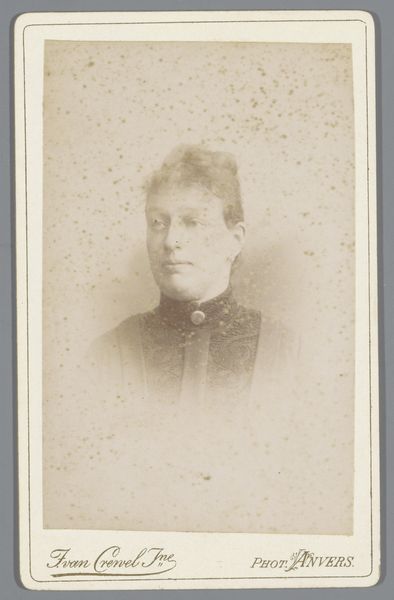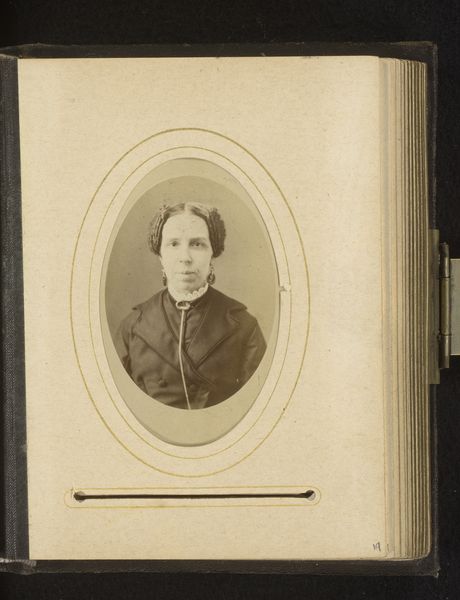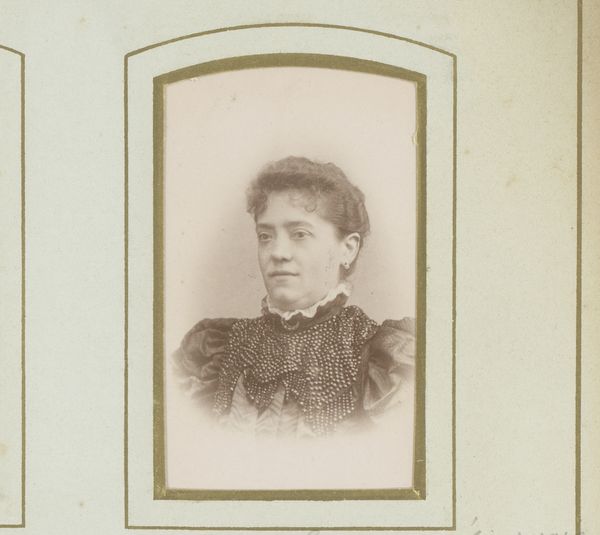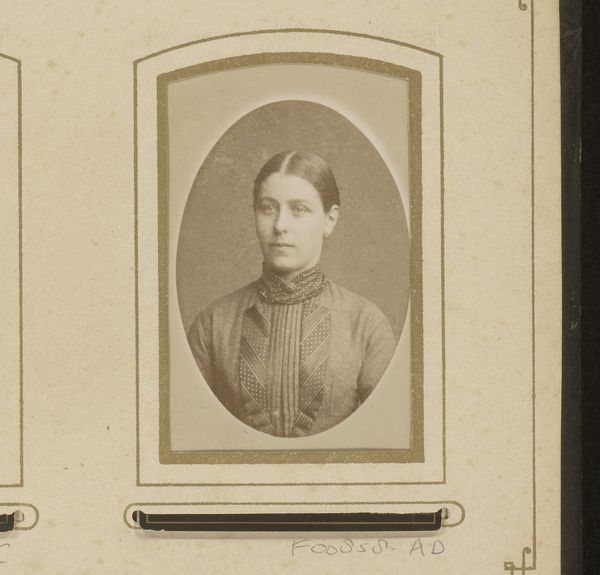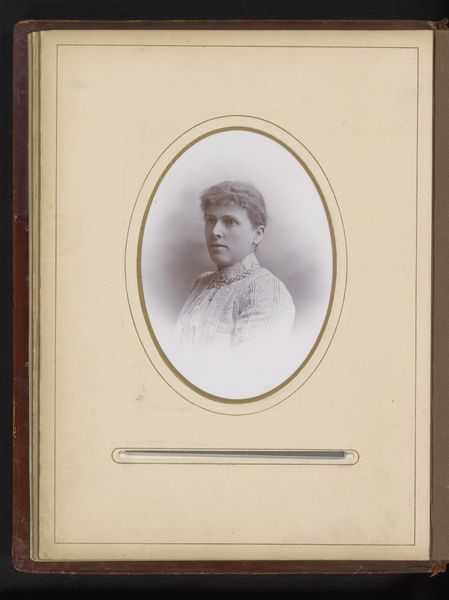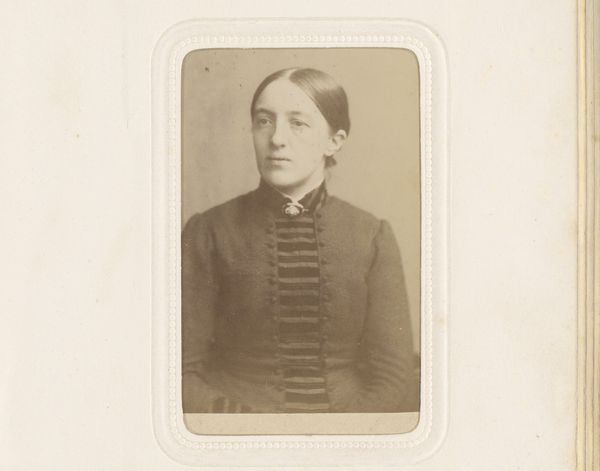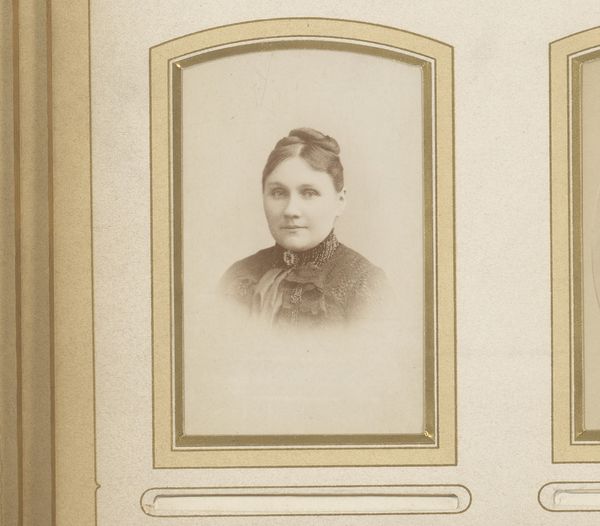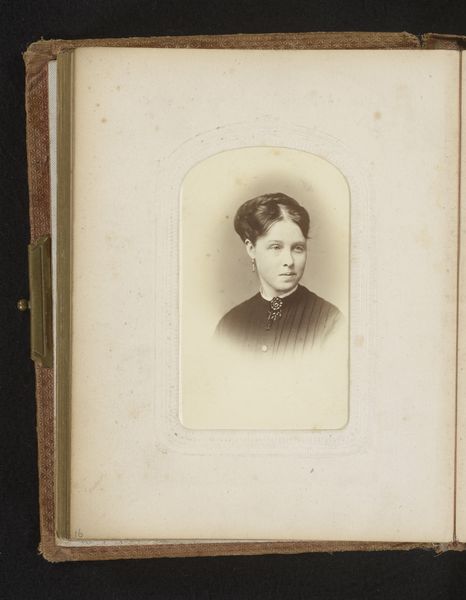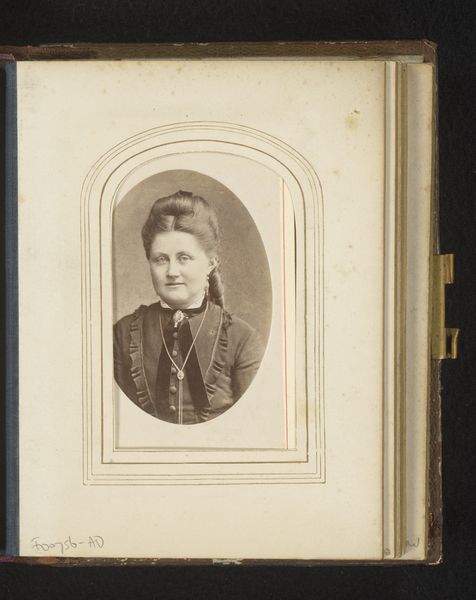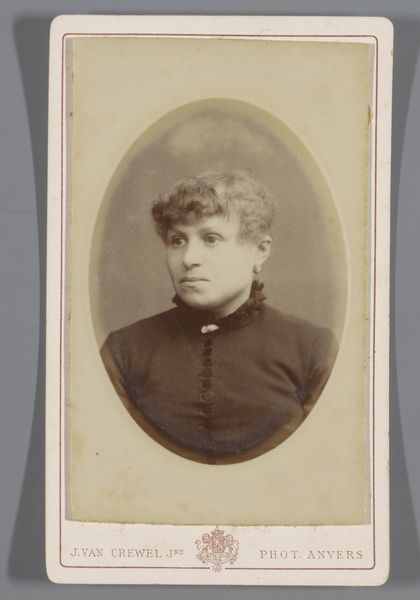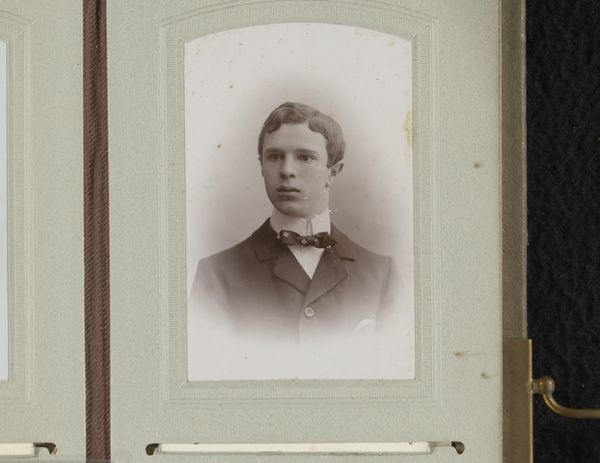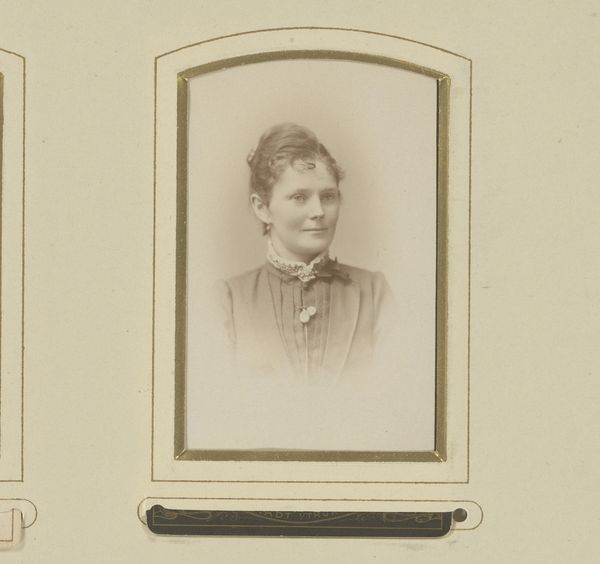
photography, pencil, gelatin-silver-print
#
portrait
#
photography
#
pencil
#
gelatin-silver-print
Dimensions: height 84 mm, width 54 mm
Copyright: Rijks Museum: Open Domain
Editor: Here we have Willem Gerhardus Kuijer's "Portret van een vrouw," created sometime between 1890 and 1910. It's a gelatin silver print with pencil detailing, currently held at the Rijksmuseum. I'm immediately drawn to the textures - the smoothness of the photographic paper versus the possible roughness of the woman's dress. How do you see the relationship between material and subject in this piece? Curator: It’s fascinating to consider the industrial process of gelatin silver printing in relation to the depiction of this woman. The rise of mass-produced photography created a market for personal portraiture that wasn't previously accessible. Note how the pencil might’ve been used – possibly for subtle retouching or enhancement. The image-making labour is no longer the work of an artist, but the product of both factory and operator. How might we interpret the democratisation of images in society? Editor: That's a fantastic point about democratisation! It’s almost like photography was becoming its own industry. But, thinking about the woman herself: Do you feel that the photographic materials might flatten or add depth to her presentation? Curator: Precisely! The photographic process inherently transforms reality. Look at the standardisation implicit in mass-produced portraiture – a uniform backdrop, formal poses. Does this standardized format reinforce existing social hierarchies, or offer new avenues for individual representation within constraints imposed by capital? Do you notice anything about the format or style? Editor: I suppose it's both. The materials were readily available but constrained by format. I do notice how simple it looks, even stark compared to painted portraits of the time. It all makes me consider labour and the subject, especially compared to high art. I appreciate thinking about what the materials communicate just as much as the image. Curator: Exactly! It's not about aesthetics alone, it is about how this artwork was brought into being and its connection to industry. Editor: Right, looking at the image like that it shifts perspective completely. Thanks!
Comments
No comments
Be the first to comment and join the conversation on the ultimate creative platform.

